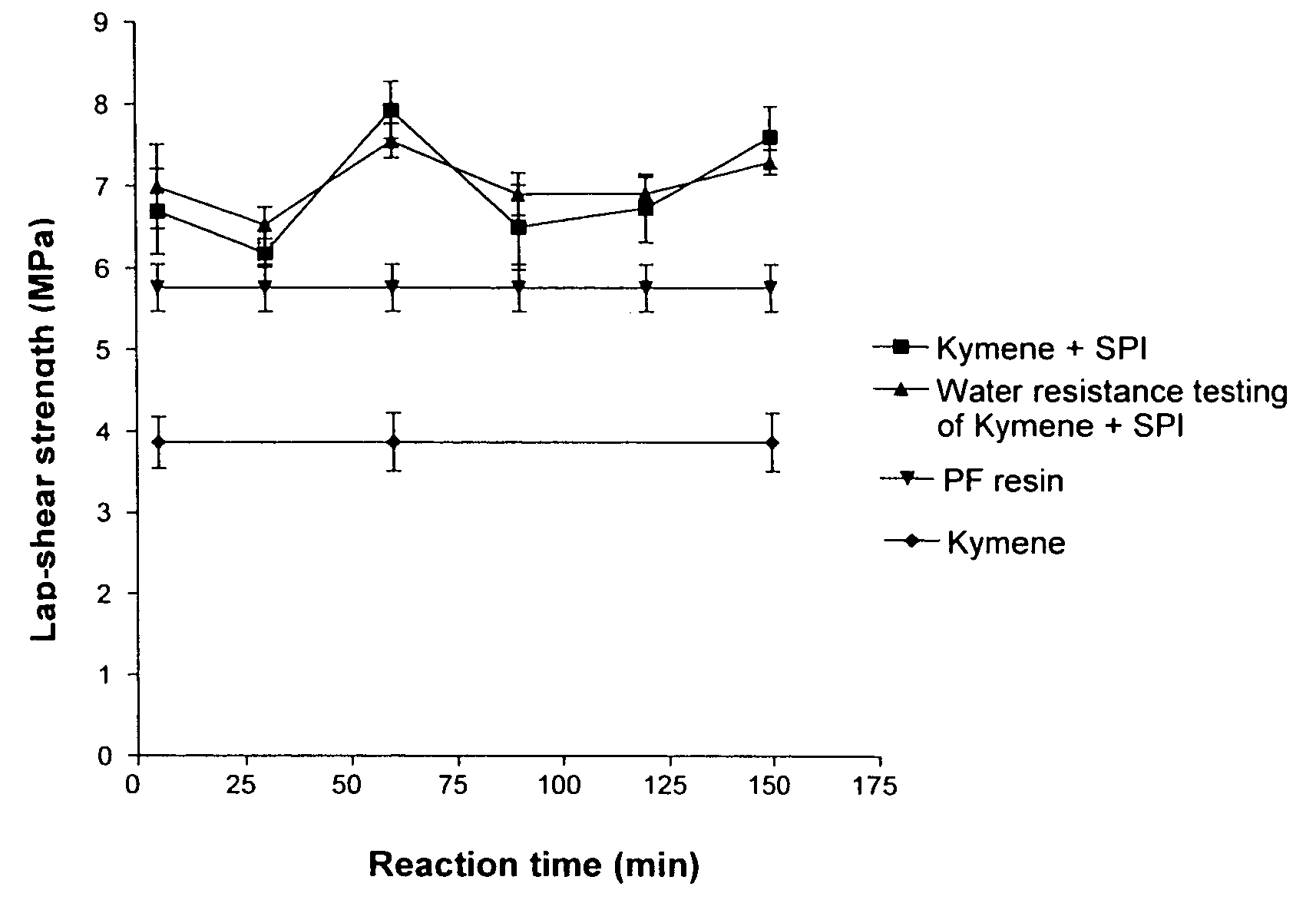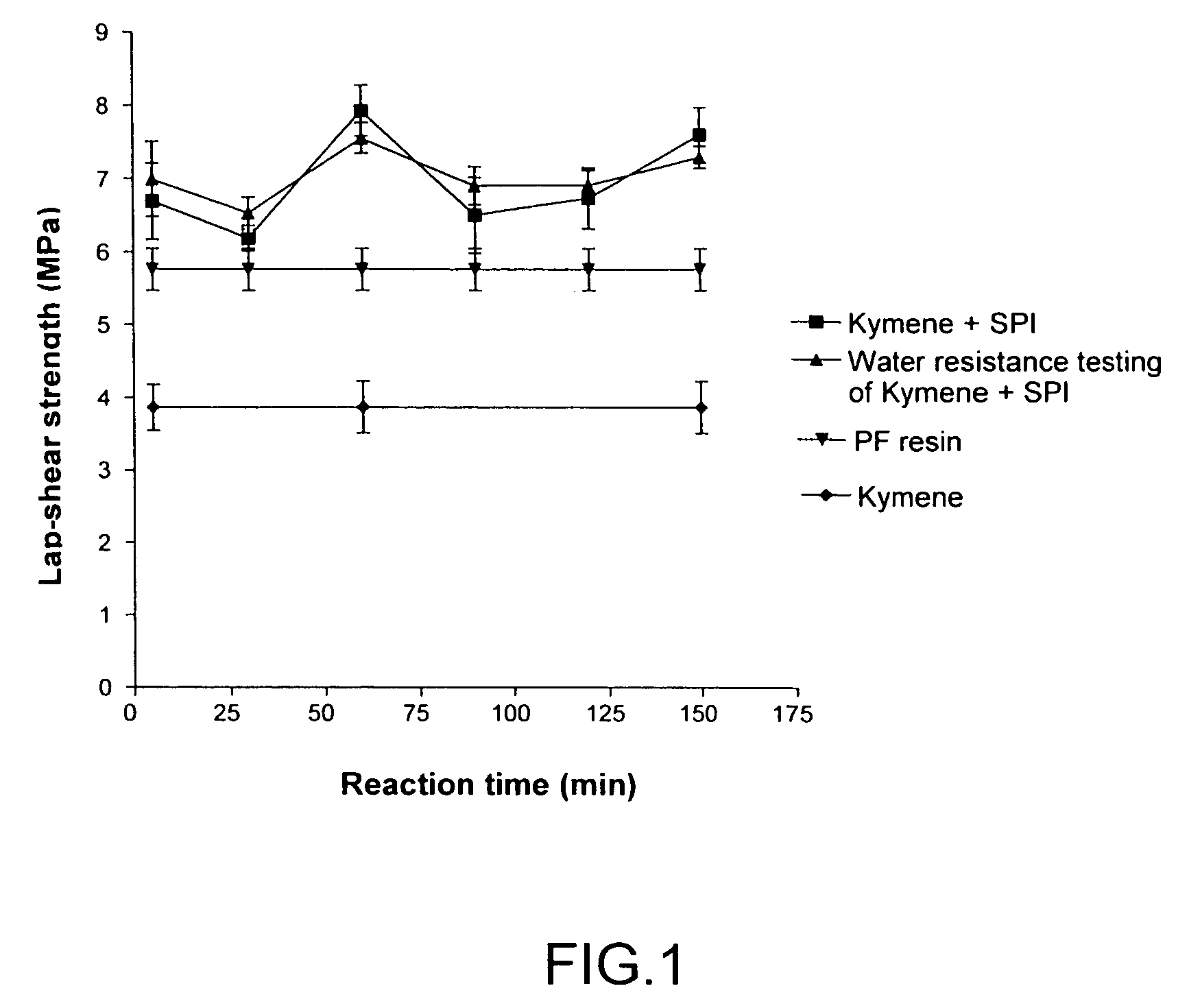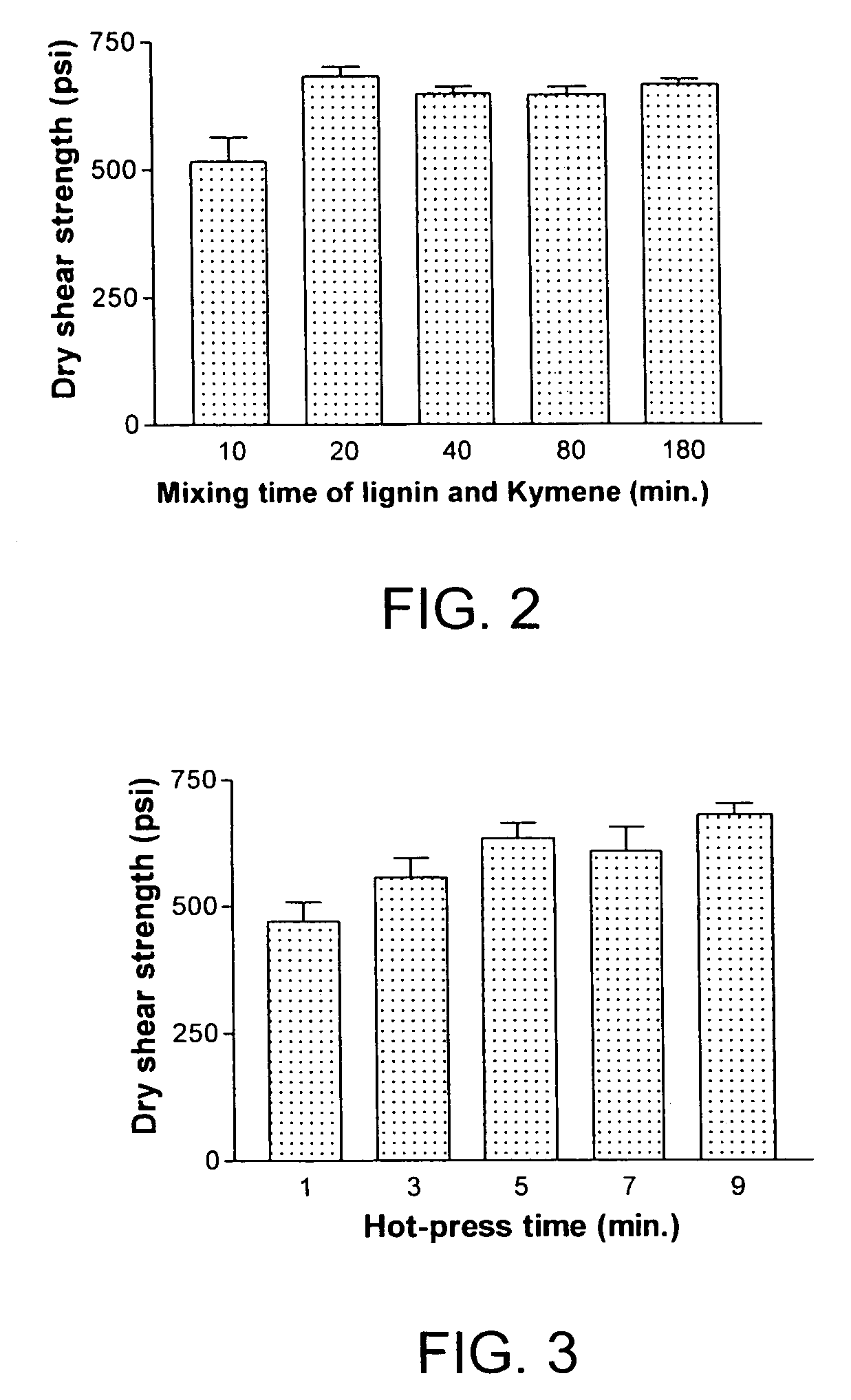Formaldehyde-free lignocellulosic adhesives and composites made from the adhesives
a technology of lignocellulosic adhesives and composites, which is applied in the field of adhesives for making lignocellulosic composites, can solve the problem of limited petroleum reserves naturally
- Summary
- Abstract
- Description
- Claims
- Application Information
AI Technical Summary
Benefits of technology
Problems solved by technology
Method used
Image
Examples
example 1
Preparation of Alkali-modified Soy Protein Isolate
[0034]SPI powder (30 g) was mixed with 400 ml of distilled water at room temperature and then stirred for 120 minutes. The pH value of the mixture was then adjusted to 10 using sodium hydroxide (1 M). The mixture was subsequently mixed in a shaker at 50° C. and 180 rpm for 120 minutes. The mixture was then concentrated to ⅔ of the original volume via membrane concentration (membrane had a 10 kDa molecular weight restriction), and freeze-dried.
example 2
Preparation of Wood Protein Adhesive Mixture
[0035]The alkali-modified SPI from Example 1 (5 g) was added to 30 ml of an aminopolyamide-epichlorohydrin resin (Kymene® 557H available from Hercules Inc.) and then stirred at room temperature. The resulting aqueous solution was used as an adhesive for maple veneers as described below.
example 3
Preparation and Testing Wood Composites
[0036]Adhesive mixtures prepared as described in Example 2, Kymene® 557H resin alone, and a phenol-formaldehyde (PF) adhesive mix commercially available from Georgia-Pacific were evaluated for their ability to bond together two pieces of maple veneer. The bonding area was 1 cm2. The adhesive preparation for testing was applied to one side and the end of a maple veneer strip (1 cm×10 cm). Two pieces of maple veneer strips were stacked together and hot-pressed at 250° F. for 5 minutes. The applied pressure was 200 psi. The lap-shear strength was measured with an Instron machine.
[0037]Water resistance of the adhesive composition (for use in composites that might be exposed to water) was also tested. The wood composite specimens obtained as described above were soaked in water at room temperature for 48 hours and then dried at room temperature in a fume hood for 48 hours. Soaking and drying cycles were repeated three times and any delamination of t...
PUM
| Property | Measurement | Unit |
|---|---|---|
| weight percent | aaaaa | aaaaa |
| weight percent | aaaaa | aaaaa |
| weight percent | aaaaa | aaaaa |
Abstract
Description
Claims
Application Information
 Login to View More
Login to View More - R&D
- Intellectual Property
- Life Sciences
- Materials
- Tech Scout
- Unparalleled Data Quality
- Higher Quality Content
- 60% Fewer Hallucinations
Browse by: Latest US Patents, China's latest patents, Technical Efficacy Thesaurus, Application Domain, Technology Topic, Popular Technical Reports.
© 2025 PatSnap. All rights reserved.Legal|Privacy policy|Modern Slavery Act Transparency Statement|Sitemap|About US| Contact US: help@patsnap.com



